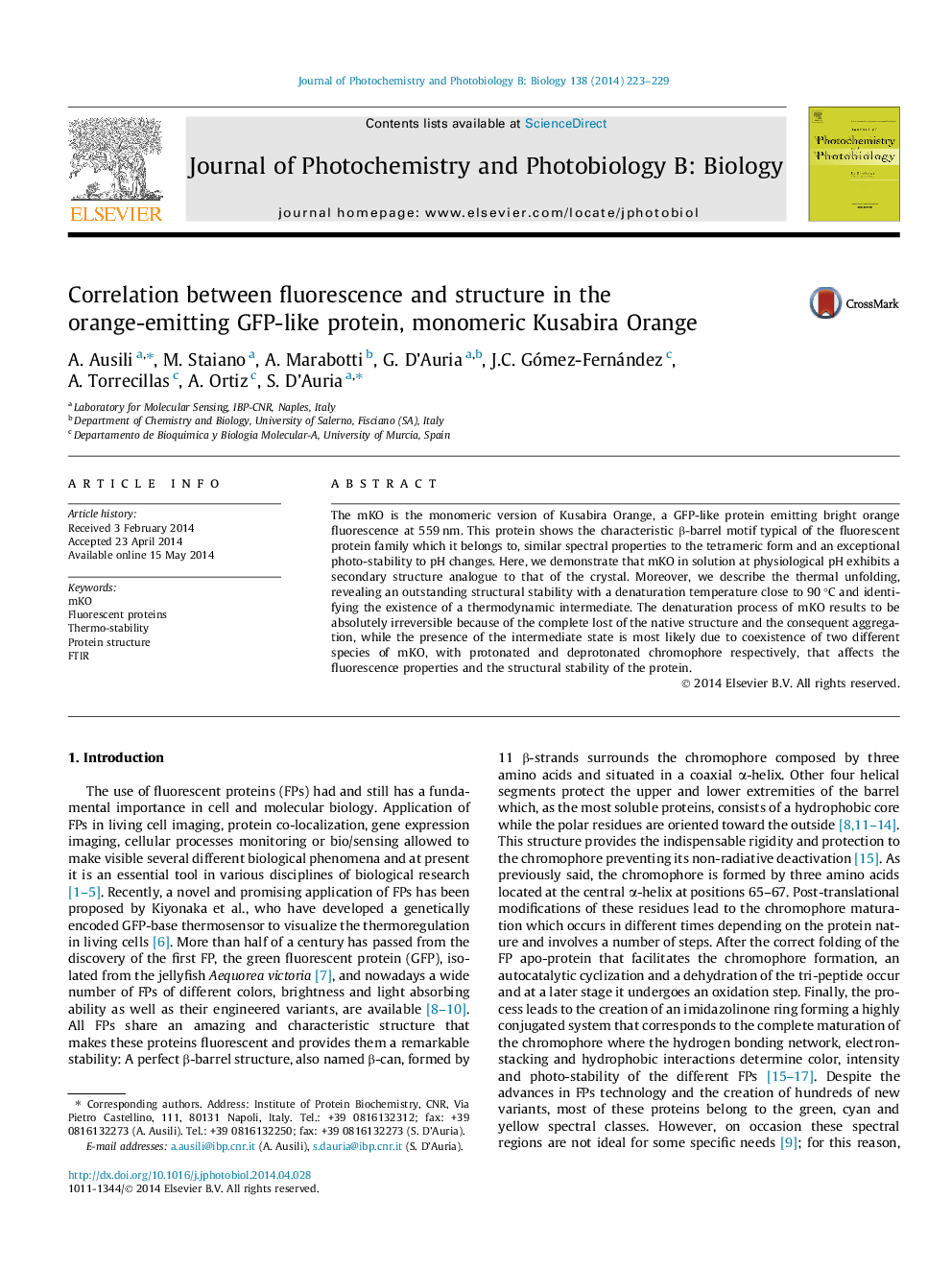| Article ID | Journal | Published Year | Pages | File Type |
|---|---|---|---|---|
| 30301 | Journal of Photochemistry and Photobiology B: Biology | 2014 | 7 Pages |
•We described the thermal denaturation process of mKO.•mKO shows a high thermostability and an irreversible three-state unfolding process.•Changes in chromophore protonation lead to variations of fluorescence intensity.•Changes in chromophore protonation are coupled to small structural rearrangements.
The mKO is the monomeric version of Kusabira Orange, a GFP-like protein emitting bright orange fluorescence at 559 nm. This protein shows the characteristic β-barrel motif typical of the fluorescent protein family which it belongs to, similar spectral properties to the tetrameric form and an exceptional photo-stability to pH changes. Here, we demonstrate that mKO in solution at physiological pH exhibits a secondary structure analogue to that of the crystal. Moreover, we describe the thermal unfolding, revealing an outstanding structural stability with a denaturation temperature close to 90 °C and identifying the existence of a thermodynamic intermediate. The denaturation process of mKO results to be absolutely irreversible because of the complete lost of the native structure and the consequent aggregation, while the presence of the intermediate state is most likely due to coexistence of two different species of mKO, with protonated and deprotonated chromophore respectively, that affects the fluorescence properties and the structural stability of the protein.
